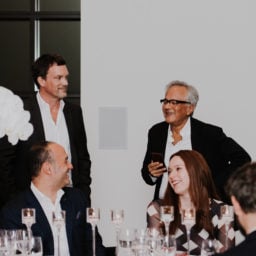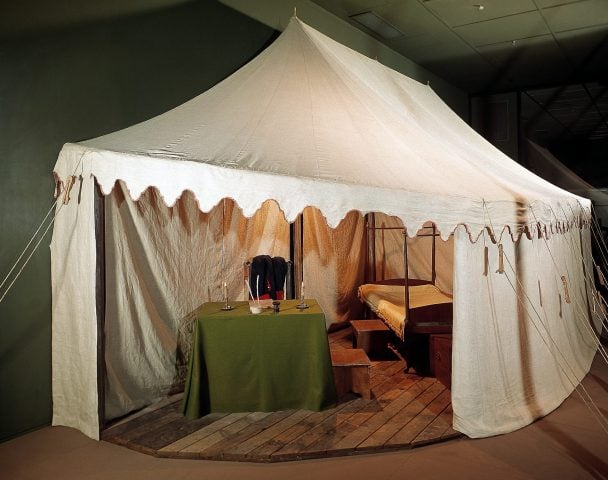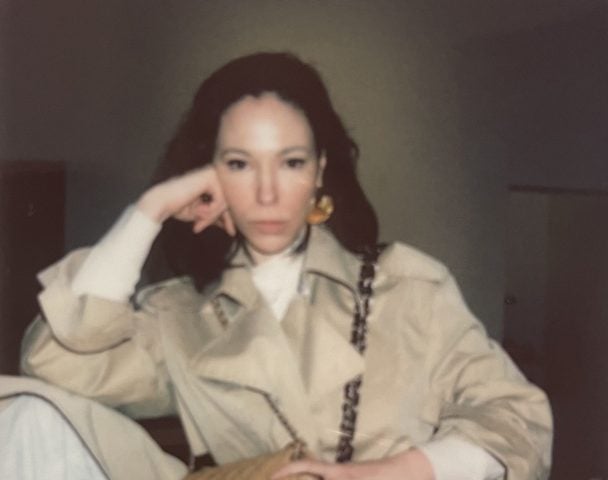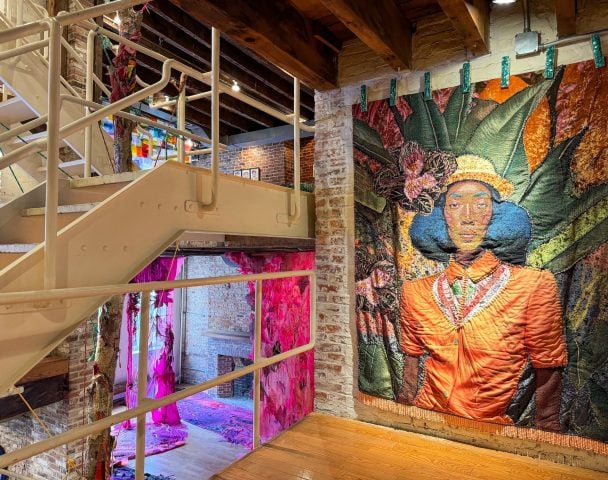One of the conditions of this new digital era we live in is that, more often than not, internet companies that become successful and gain global reach end up having a societal impact far beyond what their founders initially envisioned. Such is the case with Goliaths like Google, Amazon, and Facebook, but it is also the case with smaller companies, like artnet.
When Hans Neuendorf created his online art company in 1989, he had little inkling that providing transparent art-market data would transform what was then a boutique art business into, 30 years later, a global industry that regularly transacts in $100 million sales. But that is exactly what has happened.
Here, in the conclusion of a six-part interview series to mark artnet’s 30th anniversary, artnet News editor-in-chief Andrew Goldstein sat down with Neuendorf to discuss how he thinks his company has changed the business, how he feels about the old art world—which he enjoyed for decades as a successful art dealer—disappearing, and how he hopes artnet will change the art market for the better under the leadership of CEO Jacob Pabst, his eldest son.
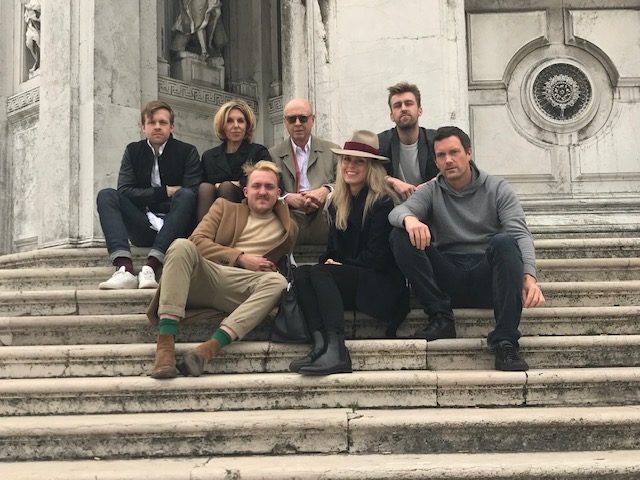
The Neuendorf family. Photo courtesy of Hans Neuendorf.
Today, the art market has exploded—it’s larger than at any point in history. You could argue that artnet’s price database, in making the art market more transparent to a global audience, has been instrumental in the extraordinary spread of the marketplace around the world.
I think you could go even further. The sky-high prices we see today—$100 million and more for a painting—would have been impossible without the database. Because when you have a price comparison, you always can muster the courage to go 10 percent higher or 15 percent higher. Then, the next season, someone else will come around and go 10 percent higher, based on the knowledge of your price. So within 10 years, the price will have doubled or tripled, just because you have comparables.
Before that, people were completely in the dark about the value of paintings—there was only party talk, you know, “How much do you think I could get for that?” People also used to set prices based on comparisons to reasonable things, like houses, cars, et cetera. For a while, people thought a good painting should cost as much as a luxury car, so they had these benchmarks they would use to maneuver in their ignorance. When artnet gave them real comparables, all of a sudden the art was free to go as high as it wanted to go. So I think the sky-high prices are probably our fault.
It used to be a boutique market run by connoisseurs and specialists, but with the pricing data, things were able to open up to people in finance who knew next to nothing about art, but who knew about numbers and projections.
Exactly. It gave them confidence.
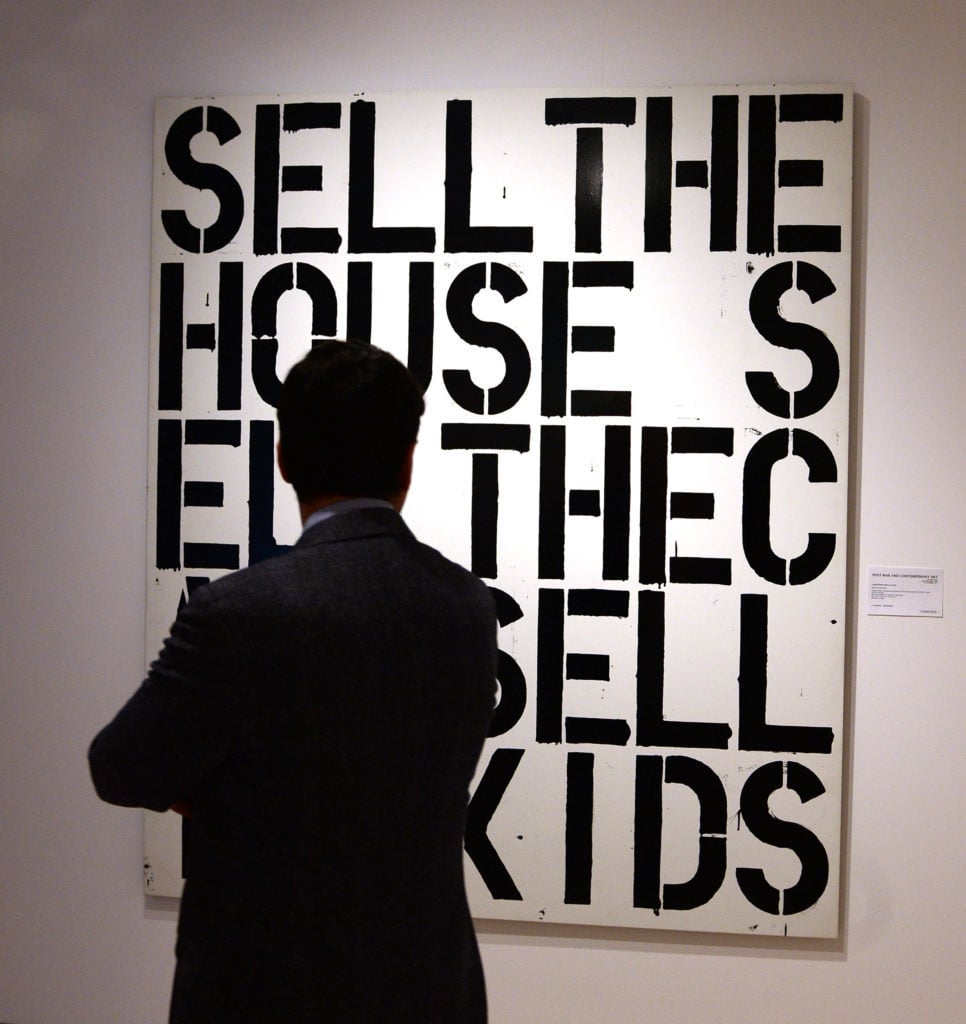
Christopher Wool’s Apocolypse Now at Christie’s. (Photo by rune hellestad/Corbis via Getty Images)
Today, artnet has helped change the art world you knew as a dealer in Hamburg into an industry defined by stratospheric prices. How do you feel about that change?
I don’t appreciate it. I think the inflow of money into the market is really damaging, because nowadays it’s not the quality of the painting that determines the price, but the price that determines the quality. So people without a clue but with money can get into competition with someone else over an artwork, because they can compare prices and pay a little more. Now, when a painting achieves a very high price on that basis, everybody thinks it must be a masterpiece. But it’s based on numbers, on nothing. It’s not based on aesthetics.
That’s why there is so little real art criticism anymore. We don’t need it. What decides value now is popularity and the credibility given by a price determined by competition between rich people over trophies. So you have many very, very expensive paintings that are not very valuable, in my opinion, and you have a lot of artists that are completely underrated because they haven’t gone into this spiral.
Do you think this wouldn’t have happened without artnet and the price database?
As long as people in the know determine the quality, and they are the ones who are advising the buyers or buying themselves, you know you are on solid ground. I, for instance, wouldn’t buy any paintings now, except from people whose work I know and feel is under-appreciated. I wouldn’t buy the newer artists now because I’m not a talent scout, and I know the price is not being determined by quality, it’s being determined by popularity—and I feel unsure about that.
My way of operating my gallery is gone forever. That’s my opinion. The art world changed completely. To what degree the database helped or didn’t help, I don’t know. But when it comes to the very high prices, I think that wouldn’t happened without artnet.
Today, the number-one most searched artist on the artnet Price Database is KAWS, a former street artist who has become a global phenomenon with paintings and other collectibles often based on popular cartoons. What do you make of KAWS?
I would never have bought a KAWS painting, nor would I do it now, even if it was priced at only 10 percent of what it is worth. I wouldn’t buy it, because I just don’t like it—I can’t connect to it. But I think KAWS is a very smooth operator. I think he knows what he is doing, and has done it all consciously. He’s not so different from Jeff Koons and Damien Hirst—he’s just another example of what these guys have been doing. And people like it.
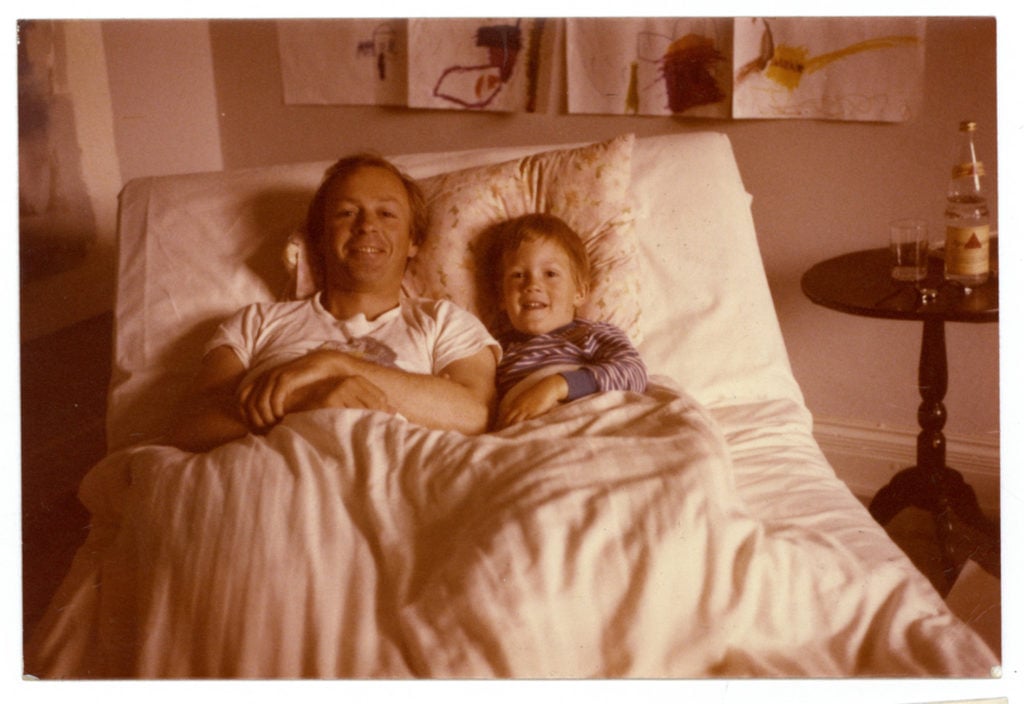
Hans Neuendorf and his son Jacob Pabst in the 1980s. Courtesy of Hans Neuendorf.
As the art industry has evolved, your company has evolved as well. The auction business has been relaunched, for instance. How do you feel about where artnet is today?
I’m very upbeat about the company. Our news operation is a huge success. Everybody’s reading it, and it has turned the brand from a price database into more of a publishing brand. I think that helped us a lot, and changed people’s perception of artnet. I’m very confident in our auctions operation, too. Having a company like artnet doing auctions where you can sell an artwork you bought five weeks ago at reasonable rates and liquidate it, that can make a big difference, because the risk of buying something will go way down.
Right now liquidity is completely missing in the market because the galleries and the big auction houses have built a wall, and ordinary people can’t get through it. That wall will break down. I’m absolutely sure of it. And when you that happens, it will attract a lot of buyers, because they have less risk. If you have a big platform that operates globally, and everything in the world is available on that platform and the prices are on the same level, that’s bound to improve the business, accelerate everything. Then, if you have a lot of volume, you can even bring the margins further down, and all of a sudden you’ll have an effective market. We have no market. What we have is a joke. The art market needs to be reformed. It’s corrupt.
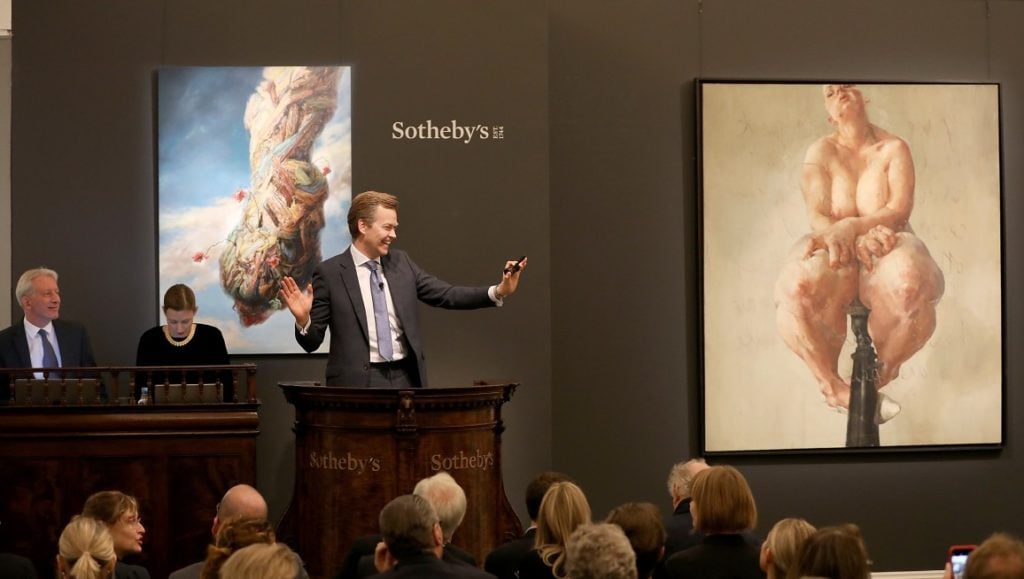
Jenny Saville’s Propped led the Sotheby’s London auction in October 2018. Image courtesy Sotheby’s.
What do you mean?
For instance, you had all these big collectors, billionaires, who were shareholders at Sotheby’s [before the auction house went private]. Because they were probably getting preferential rates, they did all their business with Sotheby’s. That’s how they got the high-end paintings and artworks, and that’s how they achieved the very high prices. So it’s a nice little corrupt setup, and then from time to time someone without a clue from Russia or someplace enters the scene and buys something for an outrageous price. And everyone benefits. It’s one big mafia there. I don’t think you can cure the art market by letting that continue. You see, there are a lot of people who like art, and I think they should be encouraged to buy art and be enabled to resell it. I think this is a necessity for a healthy market. And, of course, it will become much bigger.
But, right now, the big auction houses are basically bankrupt. They have very thin profits in their enterprises. And I think they’re ruining the business. And once this cartel is broken, the art market can recover, because all the smaller auction houses and dealers are lining up behind the big auction houses. The big auction houses overcharge their clients because they have such a huge cost structure that they need to overcharge in order to survive. And that gives everybody else cover to hide in their wake, traveling comfortably with high margins. In other words, there’s no real competition in the market, and that is the best condition for corruption. Everybody is happy, of course, but I think it can’t continue.
It also narrows down the number of artists who are being represented in the marketplace. When you achieve these high prices by looking at comparables, the market and the press tend to concentrate on those artists, and that means a large field of very good artists is being kept out, because the attention is only at the top. This is not a good development. I think it’s unhealthy. I wish I could do something to change that. We need to create an efficient marketplace. That’s what I want to do. Once that’s there, and everything is healthy and above-board, different structures will evolve. For instance, I consider art fairs to be very harmful.
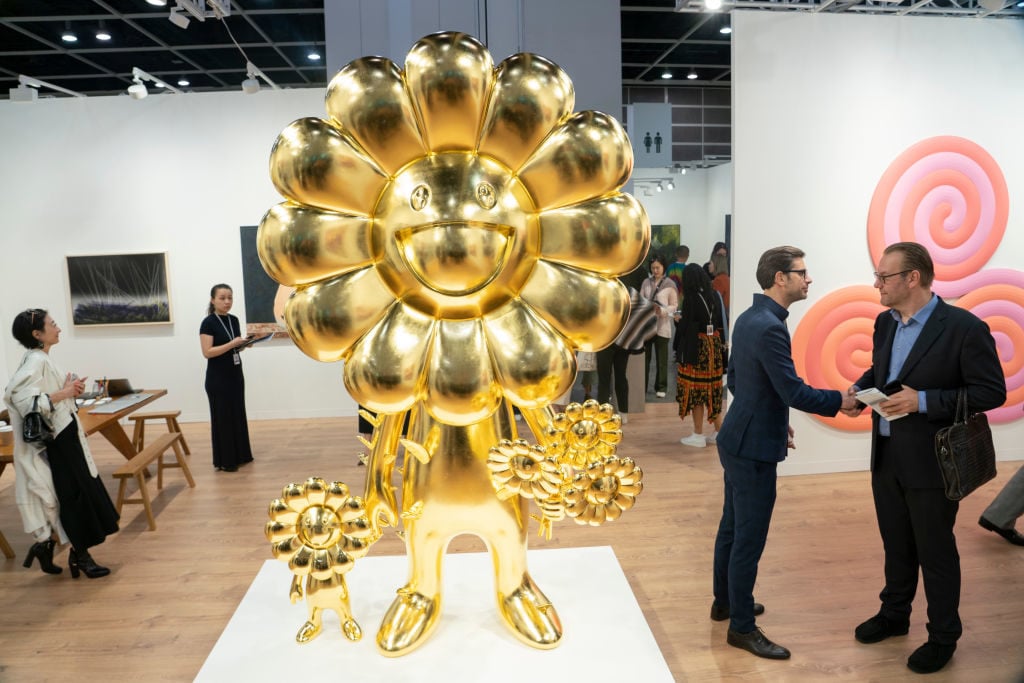
Visitors viewing artwork at Art Basel Hong Kong on March 27, 2019. (Photo by Theodore Kaye/Getty Images)
The art fairs you helped to invent.
Yes. It can be very harmful when you don’t know what you’re doing. Because art fairs are taking hundreds of millions of dollars out of the art market every year, and the galleries are starving because they have to pay these fairs. And even the art fairs aren’t succeeding in being very profitable. Who knows how long they will be able to persevere? But I think I’ve been a victim of art fairs myself, because I was there, and I think they’re boring. They’re negative for the art. You can’t understand art when you go around and you cherry-pick all these things and put them in booths—it’s the wrong way of looking at art.
So why do so many galleries do them?
Because otherwise they can’t communicate with their buyers. That’s the whole point. When you have a real online market for art, and it’s sufficient, you won’t need the art fairs. And this will boost the activity of the galleries, which is important, because the galleries must continue to be able to work. The art fairs need to be abolished. And the big auction houses are completely superfluous. Luckily they’re ruining themselves, because I don’t think they can do online auctions credibly, and I think they’re already working with tiny margins.
I think they will eventually give up. I think these two giants, Sotheby’s and Christie’s, are very vulnerable. They are remnants of a corrupt old market that was established in the 19th century. Sotheby’s and Christie’s were not started as international companies, they became that way by default. If you were to set up an efficient system to sell art worldwide, would you do it in such a way that you create these auction houses with expensive offices everywhere? You wouldn’t set that up that way by choice.
That is why we need to reestablish the rightful place of the galleries in the market, because they are really providing the communication between the artists and the public, and they do it in a million different cities around the world. That’s a network that is useful, and these people are doing very good work, talking to the artists and giving them a platform that allows them to work outside of their locality. But while the galleries are all over, the local public isn’t enough to support them. If you give them the internet and an online marketplace, they will know where to sell things that they can’t sell within their community. This way everyone would be operating globally, but situated in their local context, in direct contact with artists and collectors. I think that might be a healthy way of doing it.
So artnet gives galleries access to buyers, it gives buyers access to liquidity, and it gives everyone access to fair pricing data that creates transparency and confidence in the whole marketplace.
Exactly.
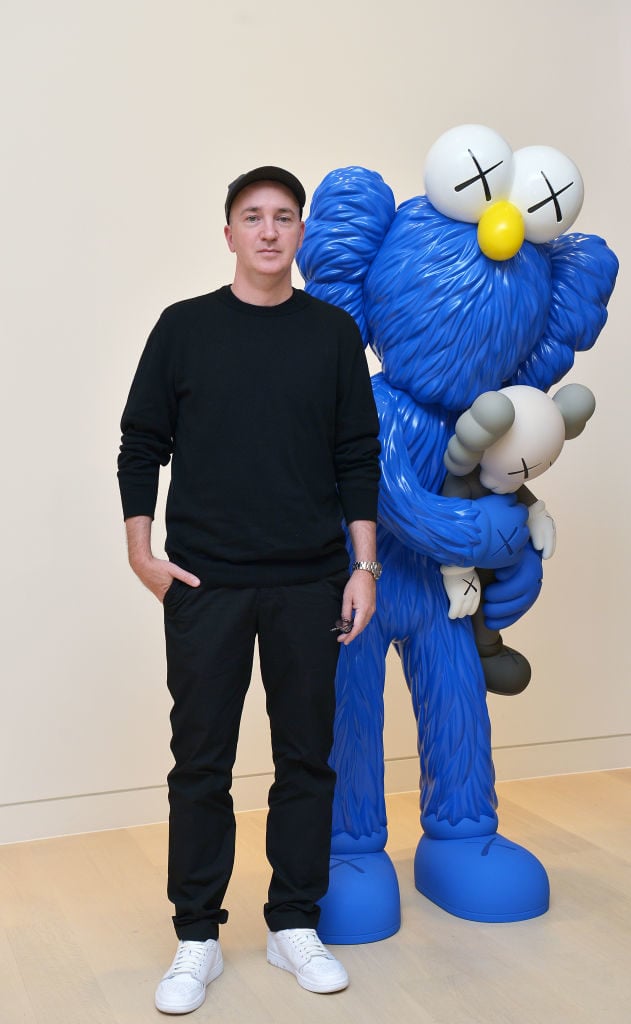
KAWS at the opening for his London exhibition at Skarstedt during Frieze 2019. Photo by David M. Benett/Dave Benett/Getty Images for Skarstedt.
How do you think the way artists work today has changed since when you were starting out?
That’s a whole other byproduct of what happened in the market. The amount of money being spent at auction and the move to see popularity as value has distorted the competition in a really bad way, because now artists are striving to achieve that kind of success. Now there’s an international style determined by demand. When I started, artists believed in a future for art, and they wanted to participate in the evolution of art. It was seen as parallel to the technical developments that were being made in other fields, and they thought they were part of a big march of human progress that was moving forward to a new world. That was an idealism which was probably ill-founded, but nevertheless the motive of making artwork was very different then from what it is now.
How have collectors changed?
I don’t know too many collectors nowadays. I know a lot of speculators. Many are half-dealers. Many strive to have an auction at Sotheby’s and Christie’s. I know one collector who had an important collection of paintings and then he had a big auction at Christie’s, with its own catalogue. He was very proud to say he had his own catalogue—he thought that was an achievement. So, you have professional collectors, while collecting was once something you did for your private fun. Collecting is not a profession. But all of a sudden, people seem to think that it is.
Do you miss the old way the art business used to operate, before artnet?
No, I don’t miss it. It definitely had bad flaws. It was easier to make money. But definitely the taste-making ability and authority has been taken away from the critics and the dealers, and it’s now the public at large that determines what is acceptable, what’s good, what should be expensive. And that’s a wholly new situation. It’s like as if you introduced democracy. This used to be an elitist enterprise, and now it’s a democratic enterprise.
Is that good?
I don’t think so. A lot of people like art and want to be involved in art, but art is elitist. Art requires education, and knowledge.

Hans Neuendorf. Courtesy of artnet.
Do you have conflicted feelings about what you have achieved with artnet?
Mainly because I don’t know where it’s going. I don’t know the future, you know, I just go by my beliefs, and that’s what I do. Others go by their beliefs. Like Artsy, for instance, wants to create a global market for art by educating the masses. Now, this is from people who have no idea what they’re talking about. They’re computer specialists, they’re not art specialists. Nevertheless, they want to educate the masses about art. What can you say?
I wonder how many people outside the company are aware of what you have done with artnet, the enormous impact that it has had.
Nobody understands it. I’m sure that nobody understands it.
Remarkably, it seems as if the efficient art world you hope to bring about is tantalizingly close—that only a few obstacles need to be overcome, like that final stretch of copper wire that prevented artnet’s data from reaching its subscribers in its early days. How far off do you think the future you envision is today?
I think it’s around the corner. [Laughs.] Well, that’s the fun, you know. We are in the middle of it.
Read the Previous Installments:
Follow Artnet News on Facebook:
Want to stay ahead of the art world? Subscribe to our newsletter to get the breaking news, eye-opening interviews, and incisive critical takes that drive the conversation forward.











